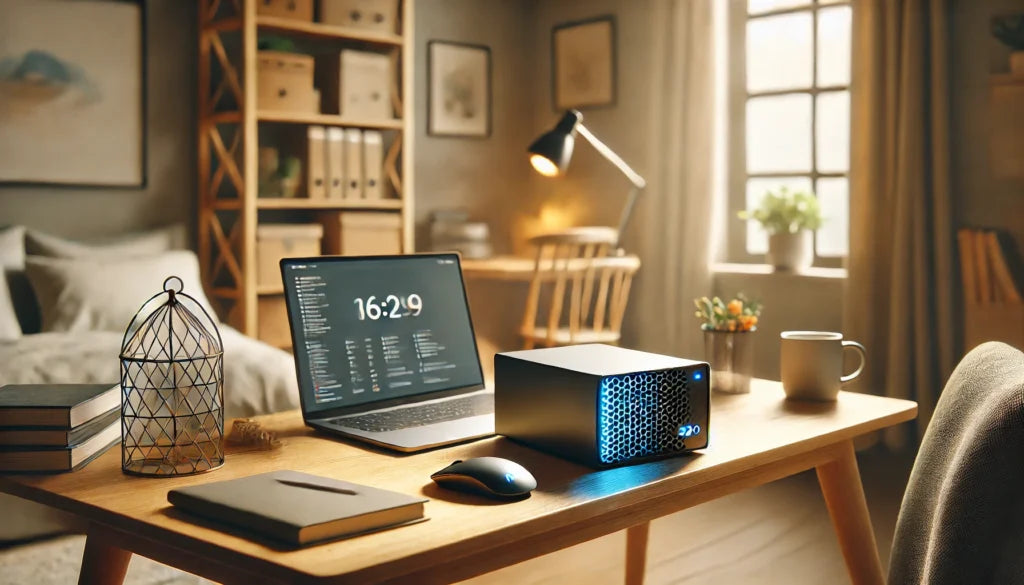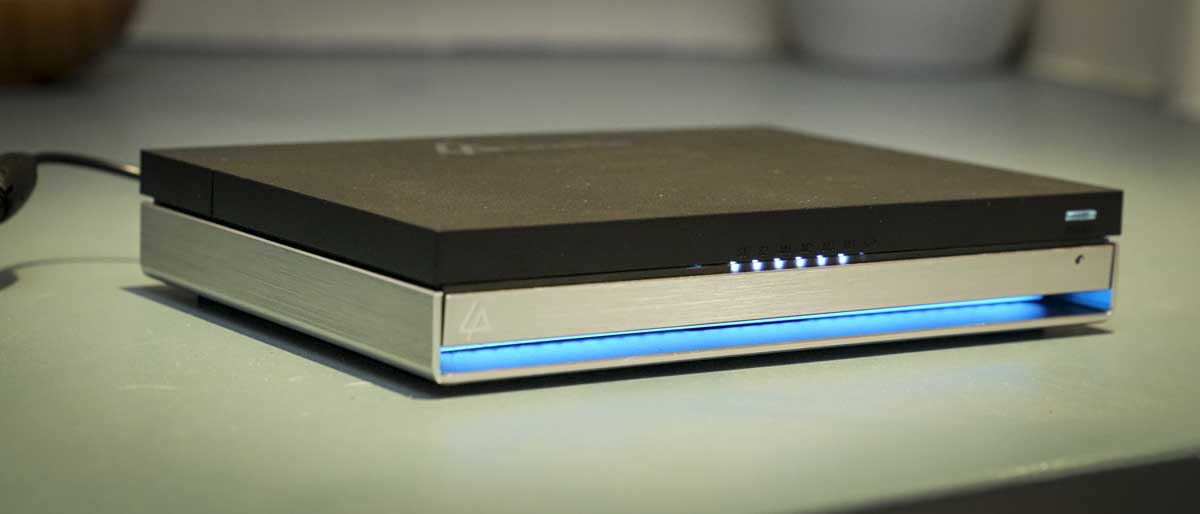Introduction: Own Your Data, Run Your Cloud
In a digital world where our lives are increasingly stored in the cloud, more and more people are asking:
- “Is there a better, safer, and cheaper way to store my data?”
- “Can I stop paying for Google Drive, Dropbox, or iCloud?”
- “What if I could run my own private cloud, media server, and backup solution?”
The answer? A mini home server.
This guide will explain what a mini home server is, why you should build one, and how it can replace expensive cloud services while giving you more control, privacy, and power.
What Is a Mini Home Server?
A mini home server is a small, energy-efficient, always-on computer connected to your home network. It acts as your:
- File storage hub
- Media streaming server
- Backup center
- Private cloud
- Self-hosted app server (Docker, VMs, etc.)
✅ Compact. Quiet. Low power. Always accessible.
Top Reasons You Need a Mini Home Server
1️⃣ Ditch Expensive Cloud Subscriptions
- Stop paying monthly for Google Drive, Dropbox, OneDrive, or iCloud. Store everything locally and securely.
2️⃣ Total Data Privacy
- Your data stays in your house, not in big tech data centers.
- No one scans, sells, or analyzes your files.
3️⃣ Media Streaming Freedom
- Host your own Netflix with Plex, Jellyfin, or Emby.
- Stream 4K movies, music, and family videos from anywhere.
4️⃣ Automated Backups
- Backup every PC, Mac, phone, and tablet in your home automatically.
- Snapshot your data for instant rollback in case of ransomware or mistakes.
5️⃣ Self-Hosting = Freedom
Run services like:
- Nextcloud (your private Dropbox)
- Bitwarden (password manager)
- Home Assistant (smart home automation)
- PhotoPrism (AI-powered photo gallery)
6️⃣ Energy-Efficient and Quiet
- Use as little as 10–15W power (compared to 300–500W for old servers).
- Fanless designs = silent operation.
What Can a Mini Home Server Do?
| Use Case | Apps/Features |
|---|---|
| File Storage & Backup | Samba, NFS, Nextcloud, Rsync, Time Machine |
| Media Server | Plex, Jellyfin, Emby |
| Self-Hosted Cloud | Nextcloud, OwnCloud |
| Home Automation | Home Assistant, Node-RED |
| Password Management | Bitwarden, Vaultwarden |
| Photo & Video Gallery | PhotoPrism, Immich |
| Web Hosting | WordPress, Ghost, Hugo |
| Virtualization | Proxmox, Docker, Portainer, Kubernetes (lightweight) |
Best Hardware for Mini Home Server in 2025
Key Requirements:
- Small form factor — Fits on a desk or shelf
- Low power consumption — 10W–40W idle
- Silent/fanless (if desired)
- Fast networking — 2.5GbE or 10GbE recommended
- Storage flexibility — Support for SSD (NVMe), HDD (SATA)
Recommended Mini Home Server Example:
| Product | LincStation N2 |
|---|---|
| CPU | Intel N100 (4-core, 6W TDP) |
| RAM | 16GB LPDDR5 |
| Storage | 4× NVMe + 2× 2.5" SATA |
| Networking | 10GbE RJ45 built-in |
| Power | ~10–15W idle |
| Size | Ultra-compact, |
| Use Case | Storage, Plex, Docker, Nextcloud, Backup |
Storage: SSD, HDD, or Both?
NVMe SSDs:
- Ultra-fast for apps, databases, cache, VM disks
- Silent, no moving parts
SATA HDDs:
- Best for bulk storage (photos, movies, backups)
- Reliable and cost-effective per TB
Best Setup:
- 1–2 NVMe drives for operating system + apps
- 2 SATA drives in RAID 1 for secure storage (mirrored backup)
Networking: Why 10GbE Is a Game Changer
- Transfer a 100GB video project in under 2 minutes
- Edit 4K/8K videos directly from your server
- Smooth multi-user access for families or small offices
✔️ With mini servers like LincStation N2, 10GbE is built-in, no upgrades needed.
Software Choices for Mini Home Server
| OS | Best For |
|---|---|
| TrueNAS Scale | ZFS storage, file server, Docker, VM support |
| Unraid | Flexible storage, Docker, media servers |
| Proxmox VE | Virtual machines + containers |
| OpenMediaVault | Lightweight NAS, file server |
| Ubuntu/Debian | General purpose server, Docker, web hosting |
| LincOS | Simple GUI for LincStation N2 |
Security: Keeping Your Server Safe
- Use strong passwords + 2FA
- VPN for remote access (WireGuard, OpenVPN)
- Firewall enabled
- Automated updates
- Snapshots + backups (instant rollback if attacked)
- Don’t expose SMB/FTP ports to the internet — use VPN!
Remote Access: Your Cloud, Anywhere
- Access files remotely via Nextcloud
- Stream movies from Plex or Jellyfin while traveling
- Manage Docker apps from any device
- VPN protects all remote connections
Mini Home Server Example Setup: Photographer + Family Cloud
| Role | Function |
|---|---|
| File Storage | 8TB HDD RAID1 (photos, docs, backups) |
| App SSD | 500GB NVMe (OS, Docker, Nextcloud) |
| Media Server | Plex streaming 4K video to smart TVs |
| Backup System | Daily backups from family PCs + phones |
| Private Cloud | Nextcloud for calendar, contacts, files |
| Smart Home Automation | Home Assistant with Zigbee devices |
Why Mini Home Server Beats Cloud + External Drives
| Mini Home Server | Cloud Services / External Drives |
|---|---|
| ✅ One-time cost | ❌ Monthly fees forever |
| ✅ Private, no 3rd party | ❌ Data on someone else’s server |
| ✅ Fast local speeds (10GbE) | ❌ Cloud upload/download bottlenecks |
| ✅ Unlimited storage growth | ❌ Pay for extra TBs |
| ✅ Fully customizable | ❌ Limited features, closed ecosystem |
Future-Proof Your Digital Life
- Data sovereignty — Your files = your rules
- Self-host your life — No more SaaS lock-in
- Energy-efficient — Eco-friendly, quiet, small footprint
- Faster than cloud — Especially with 10GbE and NVMe
Conclusion: A Smart Choice in 2025
A mini home server gives you:
- Secure, private file storage
- 4K media streaming anytime, anywhere
- Fully automated backups
- The freedom to run the apps you want
- A private cloud with no subscriptions
Whether you’re a creator, freelancer, family, or small business, a mini home server like LincStation N2 is the smartest investment for digital independence in 2025.




Hinterlasse einen Kommentar
Alle Kommentare werden vor der Veröffentlichung geprüft.
Diese Website ist durch hCaptcha geschützt und es gelten die allgemeinen Geschäftsbedingungen und Datenschutzbestimmungen von hCaptcha.